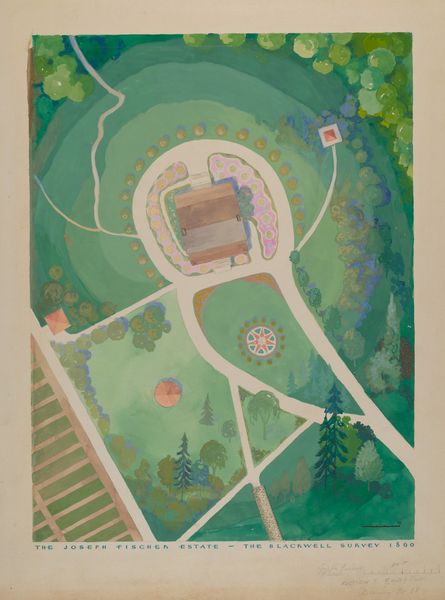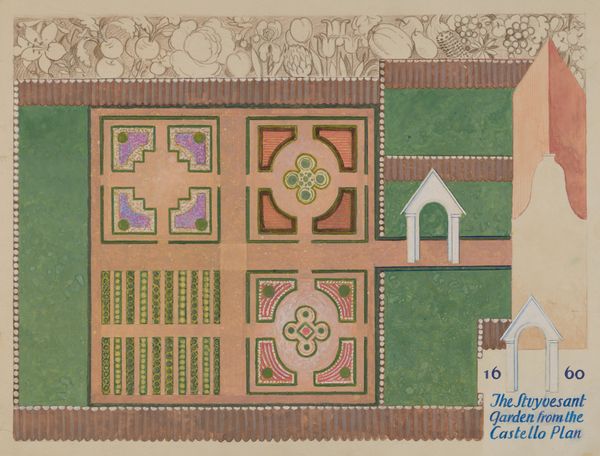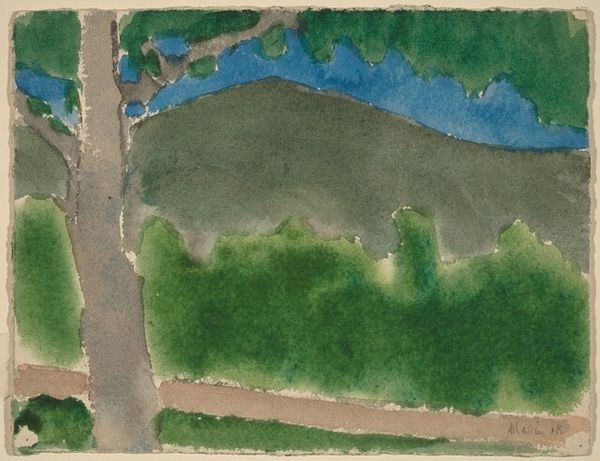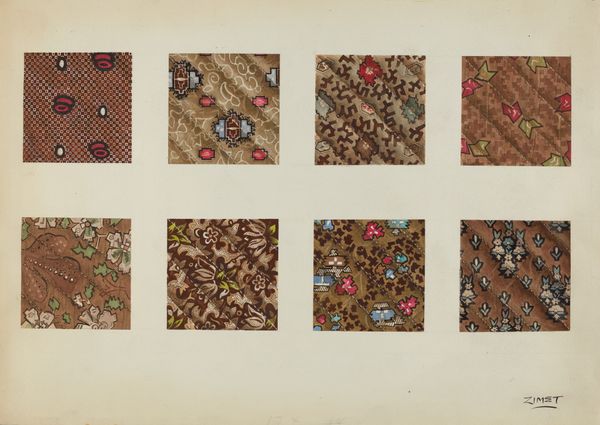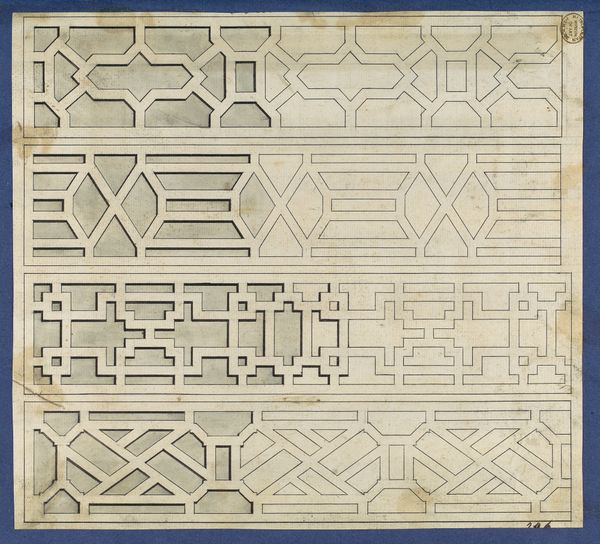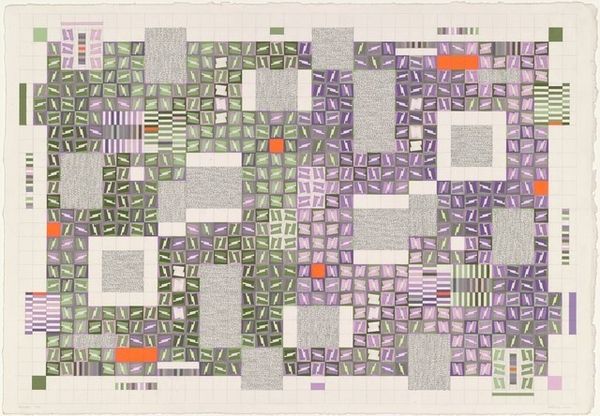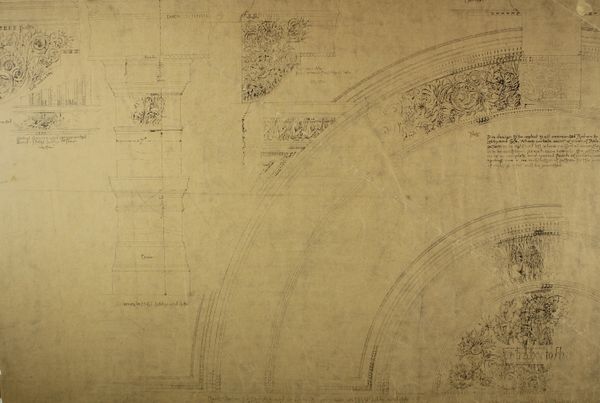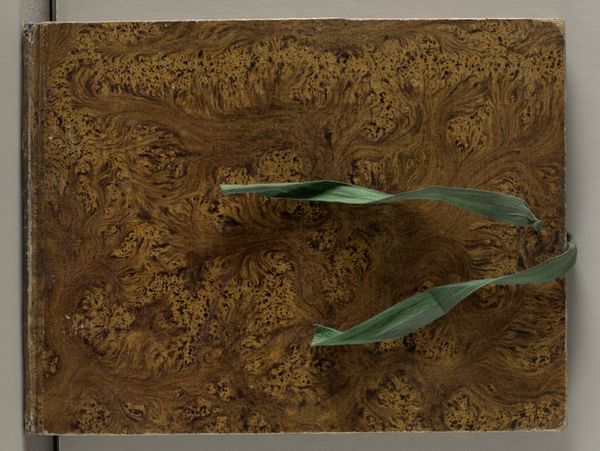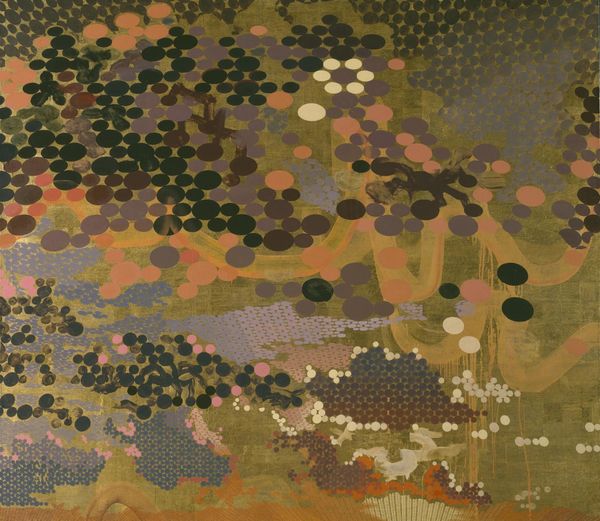
drawing, watercolor
#
drawing
#
water colours
#
landscape
#
historic architecture
#
traditional architecture
#
watercolor
#
intimism
#
geometric
#
watercolor
Dimensions: overall: 50.7 x 38.4 cm (19 15/16 x 15 1/8 in.)
Copyright: National Gallery of Art: CC0 1.0
Curator: Today, we're looking at Helen Miller's "Depeyster Estate and Garden," a watercolor and ink drawing from around 1936. Editor: It's utterly charming. There’s such an appealing geometric structure and yet softness created by the medium. The palette is limited, grounded, almost muted greens and mauves—creating this incredible sense of contained tranquility. Curator: It's interesting that you say "contained." Helen Miller, though often categorized as an intimist painter, produced work that very consciously captured elite social spaces like this one and the social dynamics within. These landscapes functioned to illustrate power and privilege in a very coded way. Editor: Coded how? On its face, it simply evokes a particular time and place with the visual language of design and organization. Look at the composition! The neat rows of plants, the meticulously placed trees—it's an almost mathematical rendering. Curator: But what does that precision signify? Think about the historical context. We can ask, who benefitted from such meticulous order? Who had the leisure to design and maintain these estates? It hints at the class structures and social inequalities of the time. Editor: I understand your point, but the technique is central to me. The controlled washes of watercolor allowing the garden and trees to be neatly categorized across the drawing. Also the high angle is vital, giving us a birds eye view on these luscious landscapes, and really highlighting their shape and scale. Curator: Exactly. It's not just a garden; it's a symbolic representation of control over nature, of imposing order. The very act of depicting it from above asserts a position of dominance. You’re elevated beyond a simple interaction to a point of observation, you may even say you are judging what’s happening. Editor: I concede the composition undeniably evokes this power, I can see how such an ordered scene becomes associated with this concept when situated in a historical and social environment that it is both inspired by and reflects. Curator: The garden becomes more than just a collection of plants; it's a visualization of social hierarchies and the labor required to maintain them. Editor: Looking closer now, through that lens, I appreciate the multi-layered effect of Miller's decisions here. A stunning piece overall. Curator: Absolutely, and one that continues to offer fresh perspectives as we deepen our understanding of its context.
Comments
No comments
Be the first to comment and join the conversation on the ultimate creative platform.
